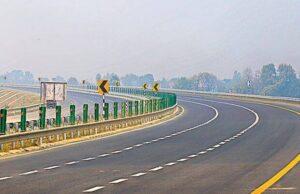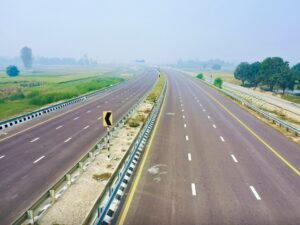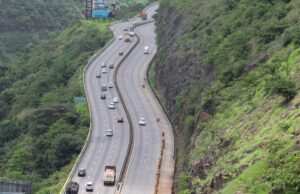The Delhi–Meerut Expressway (DME) is a major infrastructure project designed to enhance connectivity between Delhi and the key city of Meerut in Uttar Pradesh. Officially designated as National Expressway 3 (NE-3), this expressway is part of India’s broader initiative to improve transportation networks and reduce travel times across key urban centers. Stretching 96 km, the DME has transformed the commute between these two cities from a grueling three-hour journey to a seamless 45-minute drive.
This expressway was inaugurated by Prime Minister Narendra Modi in phases and has quickly gained prominence due to its impact on commuters, logistics, and economic growth in the region. In this blog, we’ll delve into the detailed structure, planning, and benefits of the Delhi–Meerut Expressway, while also exploring its current status and future implications for the region.
The Vision Behind the Delhi–Meerut Expressway
The Delhi–Meerut Expressway was conceptualized to decongest the traditional National Highway 58 (NH-58), which previously served as the primary route between Delhi and Meerut. As one of the busiest highways in northern India, NH-58 was notorious for traffic jams, slow-moving vehicles, and a high accident rate. The new expressway was designed to serve as an access-controlled, high-speed corridor that would cater to a rising volume of commuters and commercial vehicles.
Approved for construction in July 2014, the project was part of the National Highways Development Project (NHDP) Phase-VI, with a broader aim of improving the transportation grid across northern India. The foundation stone was laid on 30th December 2015, marking the beginning of a highly ambitious construction journey.
Structural Design and Phases of Development
The Delhi–Meerut Expressway is divided into four main packages that account for different segments of the route. Each package was handled by different contractors and completed at different times:
- Package 1: Nizamuddin Bridge to Delhi-UP Border
- Length: 9 km
- Lanes: 14 lanes (6 express lanes and 8 local lanes)
- Contractor: Welspun Delhi Meerut Expressway Pvt. Ltd.
- Status: Inaugurated in May 2018
- This package includes two bridges over the Yamuna River, five flyovers, and several underpasses. It is also considered the widest road in India.
- Package 2: Delhi-UP Border to Dasna
- Length: 19 km
- Lanes: 14 lanes (6 express lanes and 8 local lanes)
- Contractor: Apco Infratech Ltd and Chetak Enterprises Ltd JV
- Status: Formally opened in April 2021
- This section features numerous underpasses and a major flyover at Lal Kuan, designed to eliminate traffic crisscrossing and reduce congestion.
- Package 3: Dasna to Hapur
- Length: 22 km
- Lanes: 8 lanes
- Contractor: Apco Infratech Ltd and Chetak Enterprises Ltd JV
- Status: Inaugurated in September 2019
- This package, although part of the expressway, does not lie directly on the main Delhi-Meerut section. It instead serves as a connector between Dasna and Hapur.
- Package 4: Dasna to Partapur (Meerut Bypass)
- Length: 32 km
- Lanes: 6 lanes
- Contractor: GR Infraprojects
- Status: Formally opened on April 1, 2021
- This section is entirely greenfield, meaning it was built on undeveloped land. It is also connected to the Eastern Peripheral Expressway (EPE) and the Eastern Dedicated Freight Corridor (EDFC).
These phases were strategically divided to minimize disruption and expedite construction, with a focus on early completion. The project was completed using the Hybrid Annuity Model (HAM), a public-private partnership model where the government and private entities share the financial burden.
Key Features and Benefits
The Delhi–Meerut Expressway is not only a symbol of urban development but also a well-planned road infrastructure project with several cutting-edge features. These include:
- E-FASTag System: The expressway is equipped with e-FASTag technology, a digital toll collection system that allows for automatic toll deduction from the vehicle’s FASTag wallet. This minimizes delays and ensures a smooth, non-stop journey for travelers.
- Speed Limits: Speed limits vary based on the section of the expressway. Within Delhi, the speed limit is 70 kmph, while in Ghaziabad, it rises to 100 kmph, and between Dasna and Meerut, it increases further to 120 kmph. Autos and two-wheelers are restricted from entering the six express lanes to ensure safety.
- Widest Road in India: The stretch from Nizamuddin Bridge to the Delhi-UP border is a 14-lane road, making it the widest highway in India. This section includes provisions for both local and express traffic.
- Sustainable Infrastructure: The expressway features cycle tracks on both sides, aiming to promote non-motorized transport. Additionally, several underpasses and overbridges have been constructed to maintain smooth traffic flow.
Economic and Environmental Impact
One of the major benefits of the Delhi–Meerut Expressway is its ability to boost the regional economy by improving the transportation of goods and reducing travel time for commuters. The expressway connects important cities and industrial hubs, thus facilitating trade and commerce.
The project has also contributed to reducing pollution levels by eliminating long traffic jams, ensuring that vehicles move at consistent speeds. The expressway was planned with an eye on sustainability, incorporating green initiatives such as tree plantations along the sides of the road.
Toll Rates and Revenue Generation
The Delhi–Meerut Expressway operates on a toll-based model, where vehicles are charged based on the distance traveled. Although the official toll rates have not been fully disclosed, they are expected to be around Rs. 2 per kilometer. This revenue model is crucial for maintaining the expressway and ensuring the long-term sustainability of the project.
Current Status and Future Developments
As of October 2024, the Delhi–Meerut Expressway is fully operational, with all packages completed. However, the expressway is still being fine-tuned for efficiency. For example, in March 2021, the National Highway Authority of India (NHAI) invited bids for an additional 14.60 km connector from Zainuddinpur to Jahidpur, which would further enhance the connectivity of the region.
Moreover, there are plans to extend similar projects to other parts of northern India, as the success of the Delhi–Meerut Expressway has set a precedent for future infrastructure development.
Conclusion
The Delhi–Meerut Expressway is a monumental project in India’s infrastructure landscape. By significantly reducing travel time, enhancing regional connectivity, and providing a world-class commuting experience, it has already begun to transform the lives of millions of people. Its strategic design, sustainable approach, and focus on seamless travel will have far-reaching implications for the growth of the Delhi-NCR region and beyond.
As India continues to invest in its infrastructure, projects like the Delhi–Meerut Expressway are paving the way for a more connected and efficient future.






